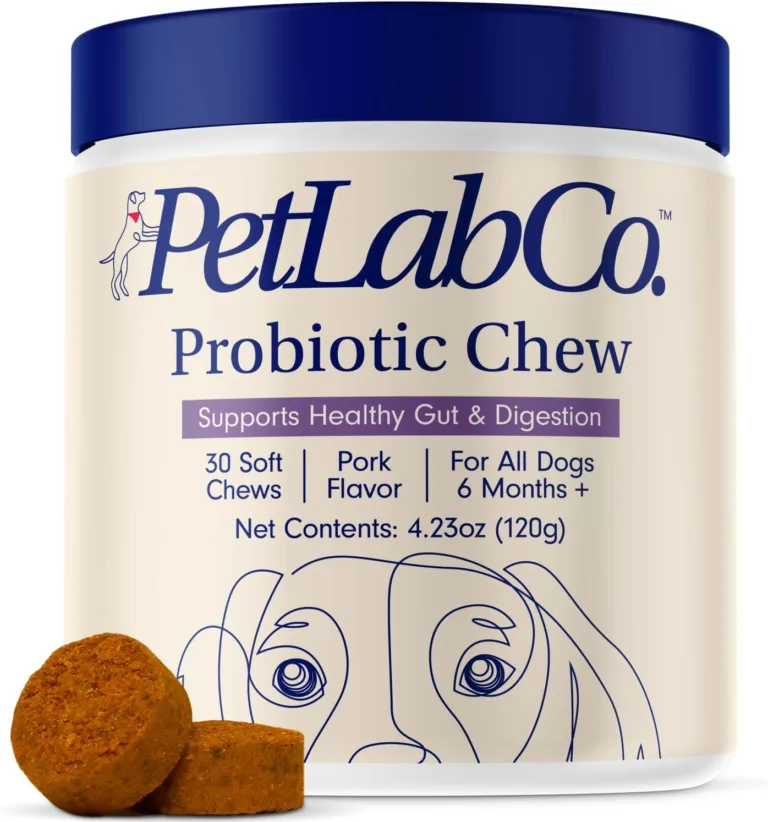Why Can’t Dogs Eat Chocolate?
You’ve probably heard it a million times: “Don’t feed your dog chocolate! It’s bad for them!” But have you ever stopped to think exactly why dogs can’t enjoy a piece of that sweet delight? In “Why Can’t Dogs Eat Chocolate”, you’ll uncover the fascinating scientific reasons behind this common warning, revealing the potentially serious consequences ingesting chocolate can have on your beloved four-legged friends. You’ll learn about the substances present in chocolate, and how their bodies react to them, arming you with vital knowledge to safeguard your dog’s health.
Understanding Chocolate’s Properties
If you’re a chocolate lover, you understand the allure. That smooth, sweet, melt-in-your-mouth quality that keeps you coming back for more. But let’s delve a bit deeper into what makes up this divine treat.
Composition of Chocolate
Chocolate comes from the cacao tree, specifically the beans inside the tree’s fruit. Basic chocolate- whether dark, milk or white- contains varying amounts of cocoa solids, sugar, milk, and cocoa butter. The proportion of these ingredients varies based on the type of chocolate we’re talking about.
Types of Chocolate: Milk, Dark, White and More
Different types of chocolates carry distinct tastes, colors, and compositions. Milk chocolate contains more sugar, milk, and less cocoa compared to dark chocolate. On the other hand, dark chocolate has less sugar, little to no milk, and a high percentage of cocoa. White chocolate, distinctively, doesn’t contain any cocoa solids, just cocoa butter, sugar, and milk.
Cocoa – The Main Ingredient in Chocolate
Cocoa is the star player in chocolate. It is responsible for the deep, rich, bittersweet flavor that we associate with this treat. Beyond flavoring, cocoa is packed with numerous antioxidants and even minerals. However, it also contains theobromine, a compound which is harmless to humans, but potentially fatal to dogs.
Why Chocolate is Harmful for Dogs
Ever wonder what’s in chocolate that makes it dangerous for Fido? It’s a compound you might not have heard of before – Theobromine.
The Toxic Compound in Chocolate: Theobromine
Theobromine is an alkaloid found in cocoa. It stimulates the central nervous system and cardiovascular system. While humans can quickly metabolize and excrete theobromine efficiently, dogs cannot. This leads to a build-up of this substance, which can cause toxicity in dogs.
Why Theobromine is Dangerous to Dogs
Theobromine becomes dangerous for our canine friends due to its effects on their cardiovascular and nervous systems. It can dilate blood vessels, stimulate the heart and cause restlessness. In severe cases, it can lead to theobromine poisoning, which can even be fatal for dogs.
Difference in Metabolism Between Humans and Dogs
Humans metabolize theobromine relatively quickly, allowing it to pass through the system with limited effects. However, dogs metabolize theobromine much more slowly, allowing it to build up to harmful levels in their system.
Symptoms of Chocolate Poisoning in Dogs
If your dog makes a move on your chocolate stash, you should know what to look out for. Prompt recognition of these symptoms can be critical to their health.
Early Signs: Increased Thirst and Restlessness
Early signs of chocolate poisoning in dogs include increased thirst, restlessness, frequent urination, and sometimes a tender tummy. At this stage, it might be easy to mistake these indications for common discomfort or fatigue.
Mid-stage Symptoms: Vomiting and Diarrhea
As theobromine continues to wreak havoc on your furry friend’s system, you might see symptoms such as vomiting, diarrhea, or both. Other signs might include panting, pacing, or other distressed behaviors.
Severe Symptoms: Seizures, Irregular Heartbeat, Collapse
Progressing over hours, this condition can escalate to the point where dogs might experience severe signs like seizures, irregular heartbeat, or even collapse. Immediate veterinary attention is crucial to prevent further deterioration and possible fatalities.
Diagnosing Chocolate Poisoning in Dogs
If you suspect your dog has eaten chocolate, immediate veterinary consultation is necessary.
Veterinary Visits
A visit to the vet will typically involve a good physical examination, knowledge of the dog’s medical history, and understanding the circumstances leading to the visit. In such situations, details like type of chocolate consumed and quantity can provide useful information to the vet.
Indicative Signs Determined by Vets
Veterinarians are trained to recognize the signs of chocolate poisoning. Persistent vomiting, diarrhea, restlessness, or high blood pressure could all point to a theobromine poisoning.
Potential Additional Tests Required
In some cases, the vet might order blood tests, an EKG, or abdominal x-rays to confirm the diagnosis or assess the severity of the situation.

Treatment for Chocolate Poisoning in Dogs
If your dog has ingested chocolate, do not induce vomiting at home unless specifically advised by a vet. Treatment protocols are typically determined at the clinic itself.
Inducing Vomiting
Your vet might induce vomiting in your pooch to expel the chocolate, but this should not be attempted at home without veterinary guidance.
Administration of Activated Charcoal
Activated charcoal may be given orally to prevent further absorption of the theobromine from the stomach into your dog’s system.
Intravenous Fluids Administration
IV fluids can help hasten the process of flushing out the toxin while keeping the dog hydrated.
Medications to Control Symptoms
Depending on the severity of the situation, your vet may also prescribe medications to control seizures, heart arrhythmia, or other symptoms.
Recovery and Prognosis after Chocolate Ingestion
Prognosis for cases of chocolate ingestion in dogs depends on the amount and type of chocolate consumed and the time elapsed between ingestion and treatment
Monitoring Dog’s Condition at Home
Post treatment, owners are advised to keep a close watch on their pet’s behaviour. Any recurrence of symptoms should be reported immediately to the vet.
Post-Treatment Veterinary Check-ups
Periodic veterinary check-ups might be needed post-treatment to ensure complete recovery.
Long-term Effects of Chocolate Poisoning in Dogs
Prolonged exposure to Theobromine or severe cases of poisoning could potentially have long-term effects on a dog’s cardiovascular and nervous systems.
Preventing Chocolate Poisoning in Dogs
Prevention is always better than cure, and most cases of chocolate poisoning in dogs are avoidable with some simple measures.
Safe Storage of Chocolate
Keep chocolate in places that are inaccessible to your dogs. Child-proof locks on cabinets might be helpful, especially if you have a curious or determined pet.
Educating Family Members
Ensure that all family members, especially kids, understand the dangers of feeding chocolate to dogs.
Alternatives Treats for Dogs
If your dog loves sweet treats, consider safer alternatives like dog-friendly fruits, vegetables, or specifically formulated dog treats.
Common Myths about Dogs and Chocolate
Let’s debunk some common myths about our four-legged friends and their relationship with theobromine-infused treats.
All Dogs React the Same to Chocolate
In fact, different dogs react differently to chocolate. Effects may depend on the dog’s size, breed, health status, and the amount and type of chocolate consumed.
Small Amounts of Chocolate are Safe
No amount of chocolate is safe for dogs. Even small quantities can potentially harm them if it contains high concentrations of theobromine, such as in dark chocolate.
Only Dark Chocolate is Harmful
While dark chocolate has the most theobromine content, all types of chocolates can be harmful to dogs.
Understanding Dog’s Attraction to Sweets
Despite the many dangers, why are our dogs still so attracted to our sweet treats?
Sweet Tooth in Dogs
While dogs do not crave sweets in the same way humans do, they are attracted to the high fat and sugar content commonly found in our dishes.
Can Dogs Taste Chocolate?
Dogs have fewer taste buds than humans, so they may not experience the complex flavors of chocolate in the exact way we do. But they do seem to enjoy human foods nonetheless.
Why Dogs are Attracted to Human Food
Dogs may be attracted to human food due to the variety of enticing smells, the rituals around mealtimes, and the appeal of sharing something with their human family.
Impact of Chocolate on Dog’s Health Beyond Theobromine Poisoning
Sweets and treats like chocolate aren’t just dangerous because of theobromine. They can affect your dog’s health in other ways too.
Weight Gain and Obesity
Chocolate is packed with sugars and fats which can contribute to weight gain and obesity in dogs. This can increase the risk of health problems like diabetes and joint issues.
Diabetes in Dogs
Chronic ingestion of sweets and high-calorie foods, including chocolate, can increase the risk of diabetes in dogs.
Tooth Decay and Other Dental Problems in Dogs
The sugar in chocolate can also contribute to dental problems, including cavity development and gum diseases, in dogs.
In conclusion, while chocolate is a tempting treat for humans, it could spell disaster for our beloved dogs. Keeping chocolates out of their reach, and opting for safer treats, will ensure they stay happy and healthy.






